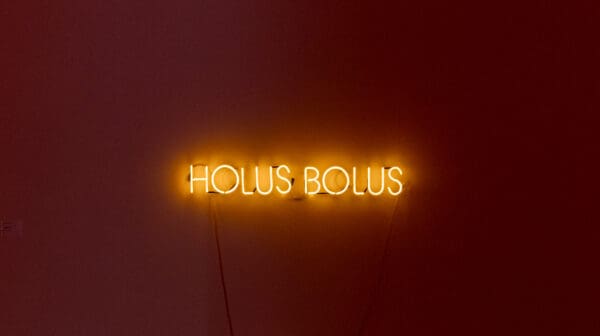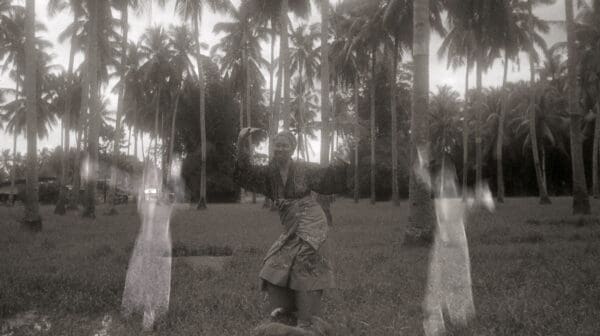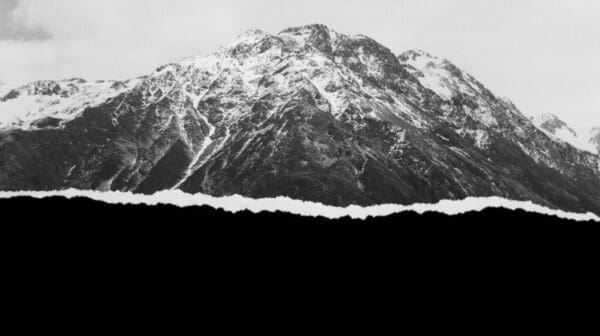Growing up on Brisbane’s north side, Bruce Johnson McLean sang and played yidaki, even touring internationally to dance with one of several Aboriginal dance groups to which he belonged. Yet in “wagging” high school, he found his ultimate career and ethos: supporting and advocating for First Nations visual artists.
“My mother worked in an Aboriginal grass roots organisation, and when I didn’t want to go to high school, I went and helped artists,” he tells Art Guide Australia. “People realised I could write, and I could speak about art, where a lot of Aboriginal people did not have that experience or vocabulary.” He understood the struggles: Johnson McLean’s family are from the Wierdi people of the Birri Gubba nation of central Queensland, but his forebears had been forced onto Cherbourg mission, about 250 kilometres northwest of the capital.
Now, having been a long-time curator of Indigenous Australian art at the Queensland Art Gallery | Gallery of Modern Art (QAGOMA), and more recently head curator of First Nations art at the National Gallery of Australia (NGA), Johnson McLean has been appointed Fondation Cartier pour l’art contemporain First Nations curatorial fellow for the next Biennale of Sydney, to open in March 2026.
This means he has a critical advocacy role, advising the 25th Biennale of Sydney artistic director, Hoor Al Qasimi, who is curating the artist selection. “I’ve advocated for a few artists within the list,” says Johnson McLean. “I provide curatorial support and advice, and I support the artists. Just as important is an element of cultural care.”
He picks up from where the last Fondation Cartier First Nations curatorial fellow, Tony Albert, left off. “He leaves a legacy of connection and generosity,” says Johnson McLean, “that sense of the First Nations artists being artists within the Biennale broadly but also having this sense of connection and providing this distinct current in its own right.”
The White Bay Power Station will be well utilised again, but First Nations work will be seen in each Biennale venue, and there will be a particular emphasis on North and South American First Nations people in 2026, says Johnson McLean, noting the release of the first list of artist names is imminent.
In the wake of the defeat of the Voice referendum in 2024, might there be an emphasis on Treaty and truth-telling among Australian Indigenous artists taking part?
“The idea of a voice is something that will resonate through many of the works,” he says, “the idea of artists having a platform and having a voice through art, where it was denied through a political platform, is embedded within some of the works, although [the political platform] probably won’t be explicitly broached.”
Johnson McLean says internationally, Indigenous Australian artists’ “voice and visions and ideas are embraced”, something he came to understand while working at QAGOMA and the NGA.
However, his most challenging time began in 2023, when the non-Indigenous staff of the APY Art Centre Collective in South Australia were accused in media reports of interfering in the production of Indigenous art. In 2024, the Australian Competition and Consumer Commission cleared the organisation of any wrongdoing, but the media storm forced the cancellation of the Ngura Pulka (Epic Country) exhibition at the NGA, influencing Johnson McLean to resign his role after almost five years with the institution.
“The political agendas around the APY, and the Ngura Pulka exhibition being cancelled, the ‘white hands on black art’ saga, the political motivations around that were pretty obvious in the year of the Voice referendum,” says Johnson McLean. “It was an opportunity for one of the few really positive spaces for Aboriginal people’s voices in the art to be silenced, to be oppressed in a way, so it was about the strength of the dominant media flexing its muscles over this amazing, positive, creative space for Aboriginal people.”
What are his thoughts on the role of artists in society, given the current threats to freedom of expression?
“Artists are some of our most courageous voices in society where our speech, even if it’s not restricted, is often curtailed,” says Johnson McLean. “We’re becoming more and more risk-averse about a lot of the things we are doing and saying both within our institutions and society more broadly.
“One of the things I do love about working with artists is they are so bold and brave and often are able to say the things that many of us can’t say, and I think that’s a really critical part of our sector. The ability of artists to have these conversations is really important, and the fact a lot of artists are now having those freedoms taken away from them is disheartening at the least.
“Through a platform that is bold and brave, like the Biennale, we are looking to really support the voice of artists and that freedom of expression that artists expect from our institutions in this country.”
The 25th Biennale of Sydney will take place from 14 March—14 June 2026.











